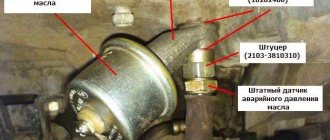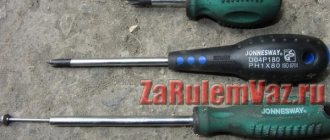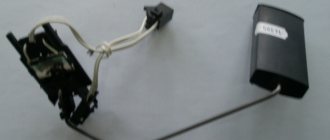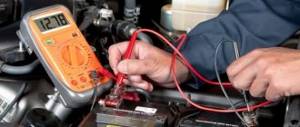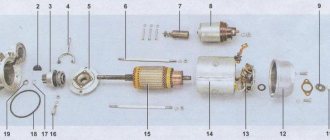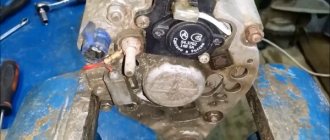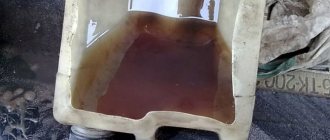Absolute pressure sensor, abbr. The DBP or MAP sensor is one of the fairly modern automotive sensors that “monitors” changes in air pressure in the intake tract caused by changes in the engine crankshaft speed and, accordingly, the load on the engine. This is just one of many recording and regulating devices that work in tandem with the ECU. Fuel efficiency and engine stability will depend on its performance. About the design of such pressure sensors, their malfunctions, as well as selection methods, see the material.
Briefly about the purpose
We remind you that the engine is the largest consumer of air among automobile units. For the normal formation of the fuel-air mixture, it requires large volumes of air. Moreover, the more air (up to a certain proportion), the better the mixture will be - it will burn better and faster, leaving behind fewer secondary combustion products. An MAP sensor is much like a flow meter, but it has one very important feature: it uses vacuum pressure (absolute pressure) as a reference point to determine atmospheric air pressure.
The absolute pressure sensor, as has already been clarified, uses the absolute pressure parameter in calculations, i.e. the difference between the vacuum pressure (conditionally 0) and the current pressure in the intake tract. Like other sensors, it sends signals to the ECU, which the unit decrypts. Taking into account the air pressure and its temperature in the intake tract, the ECU itself will calculate the density of the air supplied to the engine and its possible flow rate. Based on these calculations, the control unit will begin to regulate the preparation of the fuel-air mixture , and will also adjust the operation of the injection nozzles . It is worth noting that DBP is installed together with a conventional flow meter, although there have been attempts to completely abandon the mass air flow sensor. Another important point: in a turbocharged car, such a sensor measures the amount of excess pressure that is pumped by the compressor. And in addition, this sensor usually has a common housing with an air temperature sensor.
Sensor failures
Much depends on what software (firmware) is used by the electronic control unit. If the manifold absolute pressure sensor fails, then the most favorable outcome is to switch the ECU to emergency mode. The engine begins to operate at average parameters, which, of course, cannot be called ideal. Gasoline consumption will be higher, and slight detonation may even occur.
But the saddest outcome is a complete disruption of operation, the inability to start the engine. It is worth noting that the absolute pressure sensor in the intake manifold is a very reliable device that rarely breaks down. Most often, the flexible hose that connects the fitting and the intake manifold is destroyed. There are two options: the tube either breaks or becomes clogged. In the first case, replacement will help, and in the second, you can simply clean it.
But if something happened to the filling of the sensor, you should not even try to repair it. The fact is that this device is very complex in its design, and interference will lead to destruction. It is much easier to purchase a new element and install it. However, in modern cars most of the devices are of a non-removable type, so if they fail, all that remains is to replace them completely.
Features of the design and operation of DBP
In simple terms, DBP helps track the volume of air flowing through the throttle valve . Constantly sending signals to the ECU, it helps the control unit generate impulse commands to create the most optimal composition of the combustible mixture. However, let's go back a little. This is an absolute sensor that takes into account the difference between the current pressure and the vacuum pressure. Let's say right away that we are talking about a technical vacuum , the pressure of which is not zero. Of course, car electronics take this point into account. DBP consists of the following elements:
- A pair of chambers – atmospheric and vacuum;
- Aperture separating the cameras;
- Strain gauge and measuring circuit (operational amplifier, signal temperature compensator);
- Pressure measurement unit;
- Aluminum base;
- Pair of housing (external and internal).
The atmospheric chamber is directly connected to the air intake system. The diaphragm (membrane) that separates it from the vacuum chamber contains four strain gauges and one electronic chip. As soon as air pressure begins to act on the diaphragm, it pulls the strain gauges along with it. Depending on the movement of the diaphragm, the resistance of the resistors , which determines the magnitude of the pulse that then flows from the chip to the control element. An additional circuit of an operational amplifier and a temperature compensator allows you to create a cleaner signal, which has a positive effect on the accuracy of air pressure measurements.
MAP sensors come in digital and analogue varieties. An analog device has an additional analog-to-digital converter, while a purely digital sensor does not. Sensors of both types increase the output pulse, so that the outgoing voltage falls in the range of 1-5 V. It is the voltage value that is taken into account by the ECU, which calculates the pressure value in the intake manifold. The higher the voltage, the correspondingly higher the pressure. To summarize, let's talk about the operation of the sensor:
- The air flow in the manifold puts pressure on the diaphragm, causing it to bend;
- The diaphragm exerts pressure on the strain gauges, as a result of which their resistance changes - this is called the piezoresistive effect;
- The voltage from the sensor begins to change in proportion to the changed resistance;
- The electrical circuit amplifies the bridge voltage, which can vary in the range of 1-5 V;
- The ECU receives a signal from the sensor and calculates the pressure level in the intake tract.
Despite its rather simple design, there are a lot of things that can go wrong in the absolute pressure sensor. For example, a diaphragm that tears or stretches. For this reason, such sensors have to be changed periodically - their service life is extremely limited. We propose to consider the most common malfunctions of the MAP sensor, as well as signs of sensor failure.
Principle of operation
Absolute air pressure sensor circuit
The absolute pressure sensor performs the function of monitoring the amount of air passed through the throttle valve. Knowing it, the system generates an impulse to the injectors, and an amount of fuel enters the combustion chamber that corresponds to the optimal fuel mixture ratio. The operating principle of the absolute pressure sensor is based on changing the conductivity of piezoresistors. To understand the process, let's consider what happens inside the device:
- The diaphragm, which is the sensitive element of the device, is subject to pressure from the input manifold, deforming its surface. On the opposite side of the diaphragm there is a vacuum area. It is because of this that the unit is called an absolute pressure sensor.
- Deformation of the surface of the diaphragm occurs due to stretching. In this case, strain gauges located on the surface change their resistance due to the piezoresistive effect. The voltage changes proportionally to the change in resistance.
- The strain gauges are connected in a “bridge” configuration and therefore have greater sensitivity. The chip located in the sensor increases it even more. As a result, the voltage at the sensor output can take a value from 1 to 5V.
- The output signal is sent to the input channel of the electronic control unit, where it is evaluated and, based on it, a command for the injectors is generated. Moreover, the higher the voltage, the greater the pressure.
Article on the topic: Inspection hole in the garage: how to make it?
Based on the amount of pressure detected, sensors are divided into those used in naturally aspirated engines (determined from 0 to 1 atmosphere), and those used with turbo engines or engines equipped with mechanical superchargers (determined from 0 to 2 atmospheres).
More information about faults
The performance of the absolute pressure sensor directly affects engine performance. At the command of the ECU, it can go into emergency operation mode, and sometimes it may not start at all. For this reason, a competent car enthusiast should know what indicates failure of the absolute pressure sensor . It is worth paying attention to:
- The appearance of a fuel smell in the exhaust gases;
- Increasing its consumption. The reason lies in the fact that the power unit control unit receives unreliable data on air pressure and supplies an over-enriched mixture to the engine cylinders;
- The appearance of white exhaust from the exhaust pipe;
- When idling, the engine does not slow down for a long time;
- Unstable engine operation in any mode, as well as the appearance of noise;
- The appearance of jerks when changing gears;
- Deterioration of vehicle dynamics.
These malfunctions are quite easily confused with malfunctions of other control and recording devices of the automobile power unit . For this reason, the car owner will probably have to contact a service station for a comprehensive diagnosis. If the problem lies in the MAP sensor, then most likely the problem is related to:
- Break of ground contact;
- Fault inside the sensor (circuit, diaphragm, strain gauges);
- Pipeline coking;
- If the air temperature sensor fails (usually it has a common housing with the DBP);
- Poor connection of the device to the inlet fitting;
- Depressurization of the vacuum hose.
As practice shows, the absolute pressure sensor has low maintainability . For example, if it gives incorrect readings, then the repair will not yield results. Cleaning contacts from dirt and oxides in some cases gives a positive result. To access the “filling” of the sensor, you need to cut its cover with a scalpel, clean it, then dry the device, fill it with silicone sealant, dry it again and reassemble it.
How to check the absolute pressure sensor
Diagnostics of the absolute pressure sensor
For different types of devices, the methodology for checking them is also different. For analog type, the check will be as follows:
- Connect an adapter with a pressure gauge to the vacuum hose located between the sensor and the manifold.
- Start the engine at idle speed. If after some time the vacuum in the manifold is small (425 - 520 mm Hg), then it is necessary to check the tightness of the flexible hose, as well as the correct installation of the camshaft belt and the integrity of the sensor diaphragm.
- Instead of a pressure gauge, connect a vacuum pump.
- Create, using a pump, a vacuum of about 560 mm Hg. Art.
- After stopping pumping, the pressure must remain for at least 30 s.
Diagram for checking the absolute air pressure sensor
Checking the digital manifold absolute pressure sensor is as follows:
- Take the tester and set it to voltmeter mode (up to 20 V).
- Turn on the ignition.
- Find the ground, signal and power contacts.
- Connect the positive probe of the voltmeter to the signal terminal of the sensor. The device should show a voltage of 2.5V relative to ground.
- Switch the tester to tachometer mode.
- Disconnect the vacuum hose.
- Connect the positive probe to the signal terminal, and the negative probe to the sensor ground.
- The device readings should be in the range of 4500-4900 rpm.
- Connect the vacuum pump.
- Change the vacuum value using the pump, monitoring the tachometer readings. The pressure and readings of the device must be stable.
- After turning off the pump, the device readings should return to 4500-4900 rpm.
Article on the topic: Kia Sorento 2.2, 2.4, 2.5, 3.3, 3.5 fuel consumption per 100 km
As a result, if a component fails one of the tests, it must either be repaired or replaced. The cost of sensors is quite high, so repairs can be very worthwhile. However, the design of the device is not designed for repairs, so all manipulations must be carried out at your own peril and risk.
Finding a new sensor
Finding a new DBP is quite easy. There is one problem: a new device costs a lot of money . We recommend that car enthusiasts buy original sensors, since the quality of their performance is not satisfactory. In the case of an absolute pressure sensor, the requirements for the quality of the device are particularly high. However, there are also cheaper analogues on sale, which we will talk about a little later. You can find a new DBP by:
- VIN code of your car;
- Article number of the existing sensor;
- Technical parameters of the car and engine.
The most popular way is to search by vehicle parameters. Not all online stores allow you to use the VIN code when searching, and the car enthusiast probably does not have the article number for the required spare part. On Avto.pro, the search system for car and internal combustion engine parameters is implemented as follows: the buyer goes to the catalog, selects the make and model of the vehicle, selects a category of spare parts (brake system, electrical, optics, etc.), selects the desired spare part from the drop-down lists . As you can see, this is a step-by-step search , so it’s difficult to make a mistake - at each stage you just need to be careful. Don't forget to check which engine model the sensor is selected for. Although different DBP models are often interchangeable, we recommend choosing a device that is guaranteed to be compatible with your car’s engines.
On the secondary auto parts market it is not difficult to find analogues of original absolute pressure sensors. If you search in foreign catalogs, you can find them there under the name “ MAP-sensor ”. Often analogues are two or three times cheaper than the originals. It is worth paying attention to the products of companies that supply the conveyors of automobile concerns. It is worth highlighting the following brands:
- Bosch (Germany);
- Meat & Doria (Italy);
- ACDelco (USA);
- Inzi (South Korea);
- EPS (Italy);
- Denso (Japan).
Also, when searching for a sensor, car enthusiasts can find products from companies such as Era (Italy), Autlog (Germany), Delphi (USA). These are packaging companies whose quality of spare parts can be either low or completely satisfactory. Among car enthusiasts, this phenomenon is called a “lottery”. If your budget is limited, but at the same time after some time you are guaranteed to be able to buy a more expensive and guaranteed high-quality sensor, the products of the above three packagers are worth paying attention to.
Conclusion
The absolute pressure sensor does not have the shortest service life, but many car enthusiasts are faced with the need to replace it after just a few years of using the car. It is quite difficult to identify its breakdown without the help of a specialist - malfunctions can indicate either failure of the mass flow or air temperature sensors, or engine problems. DBP can hardly be called repairable. The simplest cleaning of the contacts is the only thing that can be done to “reanimate” the sensor. If you need to choose a new device, we advise you to pay attention either to the originals or to expensive auto parts from the most well-known companies. Budget sensors are highly likely to fail within a year or a year and a half, however, they will also turn out to be a good repair solution if you cannot afford more expensive products right now.
How does a pressure sensor work?
This device measures the pressure in the intake manifold. The signal is sent to the electronic control unit and, using a special formula, it calculates the amount of air supplied to the fuel rail. Hyundai Accent cars use either a DBP or a mass air flow sensor. It is worth noting that on some cars these devices work together to increase the efficiency of the injection system.
The measurement occurs through the use of one of the technologies:
The second technology is the most modern and effective; with this technology you can achieve the highest measurement accuracy. If you decide to install a turbocharger on your car, you must install another sensor, structurally similar to DBP, between it and the intake manifold. It will allow you to adjust the pressure created by the turbine, based on the needs of the engine.
The design of the DBP consists of:
- Atmospheric chamber connected to the collector.
- Vacuum chamber.
- Strain gauges in the amount of 4 pieces, connected in a bridge circuit, are located in a vacuum chamber.
- The diaphragm is mechanically connected to strain gauges.
- Chip.
The work proceeds as follows:
- Air pressure begins to act on the diaphragm.
- Strain gauges move.
- The resistance of the strain gauges changes.
- The signal level at the microchip output changes.
- The engine control unit receives and processes the signal, and uses it to adjust the operation of the Hyundai Accent injection system manufactured by TagAZ.
Of course, when idling, all data is measured and parameters are adjusted. Depending on the pressure level, the signal sent to the ECU changes. The latter adjusts the position of the IAC (idle air control). If this does not happen, then we can talk about breakdowns in the fuel injection system.
Thanks to the use of a bridge circuit for switching semiconductors, the impulse created by them when the pressure changes increases. At the output of the device, the voltage during operation can vary in the range of 1..5 Volts.
The electronic control unit records the voltage value and, based on this parameter, understands what pressure is inside the manifold. The higher the output voltage, the higher the pressure. Sensors can be either analog or digital. In the first case, analog-to-digital converters are installed (after all, the ECU microcontroller will not be able to perceive a pure analog signal).

